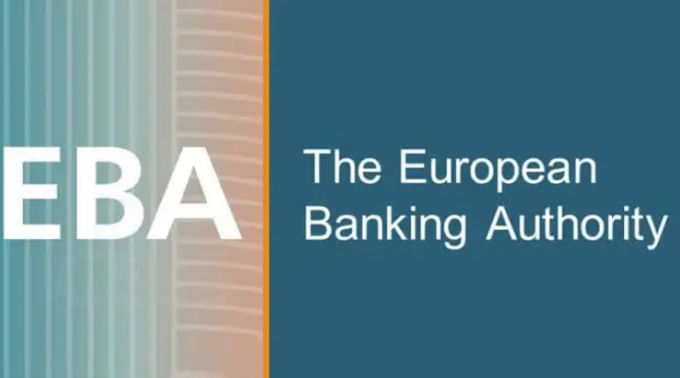
EBA Releases Liquidity Guidelines for Stablecoin IssuersEBA Releases Liquidity Guidelines for Stablecoin Issuers The European Banking Authority (EBA) has issued guidelines regarding liquidity and capital requirements for stablecoin issuers in line with the EU’s new Markets in Crypto Assets (MiCA) regulation. A third batch of #MiCAR public consultations has now been released making up part of the prudential package of MiCAR deliverables, and covers a number of topics ???? pic.twitter.com/qSOYqxnNnS — EU Banking Authority – EBA ???????? (@EBA_News) Nov...
The European Banking Authority (EBA) has issued guidelines regarding liquidity and capital requirements for stablecoin issuers in line with the EU’s new Markets in Crypto Assets (MiCA) regulation.
A third batch of #MiCAR public consultations has now been released making up part of the prudential package of MiCAR deliverables, and covers a number of topics
???? pic.twitter.com/qSOYqxnNnS
— EU Banking Authority – EBA ???????? (@EBA_News) November 8, 2023
In the latest framework published on November 8, the EBA stated that the proposed regulation envisions a liquidation stress test, which entails issuers providing a full reserve of assets pegged to stablecoins.
This means only assets meeting specific quality standards can be employed as the basis for a stablecoin or other digital assets.
➡️Supervisory Colleges: https://t.co/tdowUCP3fT
➡️Reporting of transactions with asset-referenced tokens and e-money tokens denominated in a non-EU currency: https://t.co/9YVAsHS2n5
➡️Own funds requirements and stress testing of issuers: https://t.co/2f0ZtUarFJ
— EU Banking Authority – EBA ???????? (@EBA_News) November 8, 2023
The primary objective of the guidelines is to ensure that assets can be swiftly liquidated to generate cash for paying back redemptions to investors, even in highly volatile market conditions.
This is a crucial measure to prevent panic-driven asset runs and contagion crises in stress markets.
The EBA iterated that applying the guidelines would enable stablecoin issuers to manage their reserve of assets.
➡️Recovery plans for issuers of asset-referenced tokens and e-money tokens: https://t.co/Y73PZQtEBA
➡️Liquidity requirements and liquidity stress testing of relevant issuers of tokens: https://t.co/IzxbwGgjJm
— EU Banking Authority – EBA ???????? (@EBA_News) November 8, 2023
Based on the liquidity stress test outcomes, the agency or any relevant authority may decide to strengthen the liquidity requirements of issuers to address more risks after recommendations come into effect.
Another notable highlight of the guidelines proposal is the potential exemption of banks.
The EBA clarified that banks may be exempted from certain liquidity requirements in some cases, given that they already hold funds per existing EU bank capital and liquidity regulations.
The additional regulations are intended to prevent undue capital or liquidity advantages over banks for issuers of stablecoins, which may include non-bank institutions if they adhere to the same policies.
In a closing note, the EBA stated that the proposal is still at the consultation stage, which leaves an open window for observers and the general public to provide feedback.
The consultation period will remain open until January 30, 2024, when the MiCAR will hold its initial public hearing.
Bank of England Warns Lenders on Stablecoin Amidst Third Batch of MiCARAs the EU’s MiCAR gains momentum, the Bank of England (BoE) and the Financial Conduct Authority (FCA) have unveiled initial proposals for regulating stablecoins as part of the first wave of forthcoming rules for the cryptocurrency sector.
In a joint framework released on November 6, the BoE and FCA emphasized that these guidelines are focused on the systemic retail payment systems that involve stablecoins and related service providers, such as payment platforms.
We’ve set out proposals for regulating #stablecoins to harness potential benefits like faster and cheaper payments while protecting #consumers. #Cryptoassetshttps://t.co/1hsV6snZsw pic.twitter.com/KovFmOykQt
— Financial Conduct Authority (@TheFCA) November 6, 2023
The entities underscored the risks of utilizing stablecoins within systemic payment systems and advocated subjecting them to equivalent regulatory standards.
We have published a Discussion Paper setting out the Bank’s proposed regulatory regime for systemic payment systems using stablecoins and related service providers: https://t.co/xtlbDN4Fqd
Share your views on the regime by Tuesday, 6 February 2024: https://t.co/AiICZomiDn pic.twitter.com/lEkz25EPer
— Bank of England (@bankofengland) November 6, 2023
In furtherance of this objective, the BoE sent a letter to bank CEOs outlining how financial institutions should manage tokenized deposits if they offer them.
According to the letter, if deposit-takers wish to issue e-money or regulated stablecoins to retail customers, this should be executed through distinct, non-deposit-taking, and insolvency-remote entities.
This is because cash deposit accounts in the United Kingdom are safeguarded by insurance in the event of a liquidation. However, the same does not apply to separate e-money or stablecoin accounts.
With the EU’s MiCAR and the UK’s recommendations set to take shape in the coming months, risks related to lack of regulatory clarity, fraud, and anti-money laundering (AML) may decline when put into effect.




